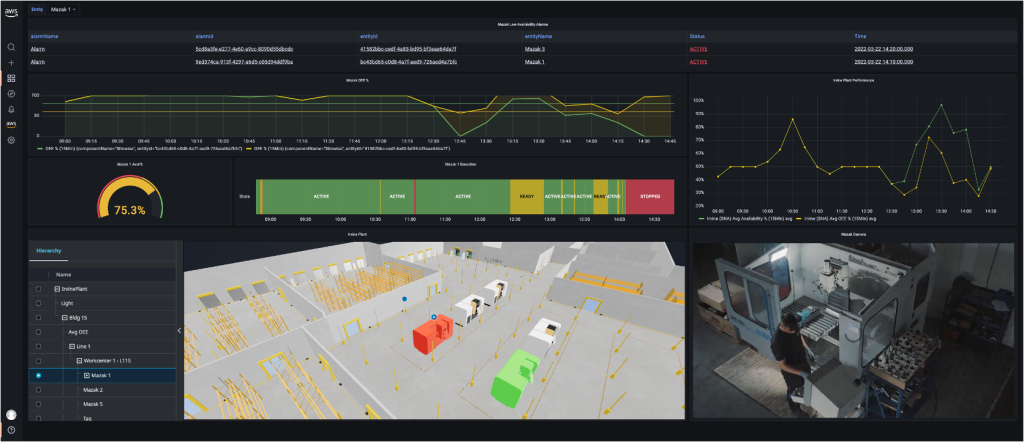The Internet of Things on AWS – Official Blog
Category: AWS IoT TwinMaker
How to use your own data source in AWS IoT TwinMaker
Introduction AWS IoT TwinMaker makes it easier for developers to create digital twins of real-world systems such as buildings and factories with the ability to use existing data from multiple sources. AWS IoT TwinMaker uses a connector-based architecture that you can connect data from your own data source to AWS IoT TwinMaker without needing to […]
Build a digital twin of your IoT device and monitor real-time sensor data using AWS IoT TwinMaker (Part 2 of 2)
Introduction This post is the second of the series on how to use AWS IoT TwinMaker to create a digital twin of a Raspberry Pi device connected to a sensor that collects temperature and humidity data, and integrate it with an Amazon Managed Grafana dashboard. This allows users to visualize the 3D environment where the […]
Build a digital twin of your IoT device and monitor real-time sensor data using AWS IoT TwinMaker (Part 1 of 2)
Introduction A digital twin is a living digital representation of a physical system that is dynamically updated to mimic the structure, state, and behavior of the physical system to drive business outcomes. Building one is usually not an easy task – to solve this challenge, we launched a new service, AWS IoT TwinMaker. AWS IoT […]
How to convert and compress OBJ models to GLTF for use with AWS IoT TwinMaker
Introduction Trying to get started with AWS IoT TwinMaker and need to convert your OBJ file to glTF? Perhaps you have performed a point cloud scan of your environment with Matterport and it’s not clear how you can import the Matterpak bundle into AWS IoT TwinMaker. In this blog, you will apply a model conversion […]
Edge to Twin: A scalable edge to cloud architecture for digital twins
Are you seeking ways to get an immersive 3D view of your systems and operations to optimize efficiency, increase production, and improve performance? Perhaps you are generating all the data you need from various on-premise systems, but are unsure how to gain access to this information in a living virtual representation. In this blog post, […]




